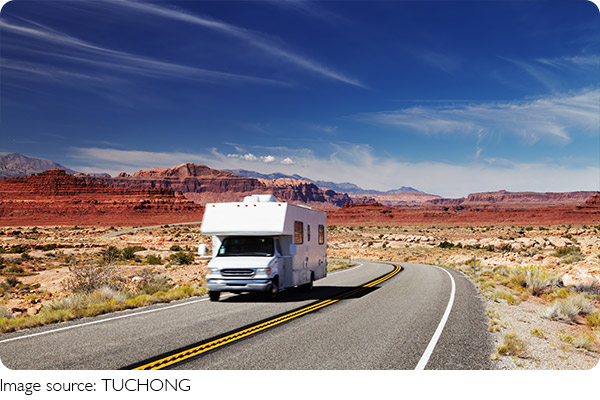Mastering Local Transport

Have you ever arrived in a new city and found yourself staring at a complicated metro map, wondering where to begin? Or maybe you've wrestled with a taxi driver over fare prices?
Navigating local transportation can be one of the most daunting parts of travel, but it doesn't have to be.
Whether you're hopping on a subway, catching a bus, or hailing a taxi, understanding the basics of local transit can make your trip smoother, faster, and more enjoyable. Let's dive into the most common modes of transportation around the world and how you can use them like a pro.
1. The Subway: Fast, Efficient, and Often Crowded
Subways are the lifeblood of many major cities. They offer a quick, reliable way to travel, especially in dense urban areas where traffic jams are common.
1. Navigating the Metro System: Most subway systems are relatively easy to navigate once you understand the color-coded map and station signs. Subway maps are usually displayed in stations and on trains, and many systems now offer apps or digital maps that can help you find your way around.
In some cities, you’ll need a transit card or a contactless payment method for access, while in others you can purchase a card for single rides or choose a weekly pass for unlimited travel.
Pro Tip: If you're unfamiliar with the area, plan your route ahead of time and double-check which direction you need to go. Don't be afraid to ask for help from locals, who are usually happy to assist.
2. Ticket Prices & Payment Methods: Ticket prices vary by city, but most metros offer affordable options for tourists. Most metro systems also offer day passes or multi-day passes, which can save you money if you plan on taking the subway multiple times.
Pro Tip: If you're staying for several days, buy a multi-day pass. In cities like Tokyo, a "Visitor Pass" offers unlimited travel for a set number of days, often with discounts on attractions.
2. Buses: A Scenic, Local Way to Travel
Buses are a great option when you want to take in the sights of the city, or if your destination is too far from the nearest subway station. They're also an ideal choice if you're exploring areas that don't have metro lines.
1. Understanding Bus Routes: Most cities will have easily accessible bus routes with clear maps in stations and online. The bus routes are typically numbered or color-coded, making it simple to find the right one. In some cities, buses are part of a well-integrated public transportation network that includes trains and trams.
Pro Tip: Always check the route map before you get on. If the system has apps, use them to track buses in real time and to avoid long waits.
2. Paying for Bus Rides: In some cities, you can pay for bus rides directly with cash, but many places now prefer digital payments via apps or contactless cards. Some cities may still require you to buy tickets at a kiosk before boarding.
Pro Tip: If you're unsure, ask a local how to buy tickets. Many buses also accept mobile tickets, so check if your phone can act as your pass.
3. Taxis: Convenient but Often Expensive
Taxis can be an excellent way to get around when you're in a rush or headed to an area not served by public transport. However, they can be significantly more expensive than using the metro or bus, especially in cities with high taxi rates.
1. How to Hail a Taxi: In most cities, you can either hail a cab on the street or request one using an app. In some places, they can be flagged down by standing at the curb and signaling, while in others you may need to book through a phone call or ride-hailing app.
Pro Tip: Always check that the taxi meter is running. If the driver refuses to use the meter, find another taxi.
2. Know the Rates: Cab fares vary depending on the city. In some places, they operate with fixed rates to and from major destinations, while in others the cost is calculated based on distance traveled and time spent in traffic. In certain regions, rides are relatively inexpensive, whereas in others they can be quite costly.
Pro Tip: Research taxi fares online before your trip. If you're worried about overpaying, try using rideshare services, which often have transparent pricing.
4. General Tips for Using Local Transport
1. Familiarize Yourself with Local Transport Apps: Many cities have developed smartphone apps that integrate different forms of public transportation—metro, bus, tram, and even bike-sharing programs. These apps can help you track schedules, plan routes, and calculate fares.
Pro Tip: Download the app for the city you're visiting before you arrive, so you're ready to go as soon as you land.
2. Plan Your Travel Times: During holidays, weekends, and peak hours, public transport systems can get crowded, which can lead to delays. Always check for special schedules or closures in advance.
Pro Tip: Plan your travel during non-peak hours for a more comfortable experience.
3. Always Carry Some Local Currency: While many cities have switched to contactless payments, not all transport systems accept cards. It's wise to have a small amount of local currency for tickets or to pay for taxis.
Pro Tip: Keep small change handy, as many buses and some taxis don't give back large amounts of change.

Conclusion: Embrace the Local Transit Culture
Using local transportation is one of the best ways to experience a city like a local. It's cost-effective, efficient, and provides a unique way to see the sights. Whether you're zipping through the subway, admiring the scenery from a bus window, or catching a quick taxi ride, mastering public transport will make your travels smoother and more enjoyable.
So, next time you visit a new city, step onto that subway or hop on the bus—you'll be surprised how much of the local life you can experience on your way from point A to point B.


